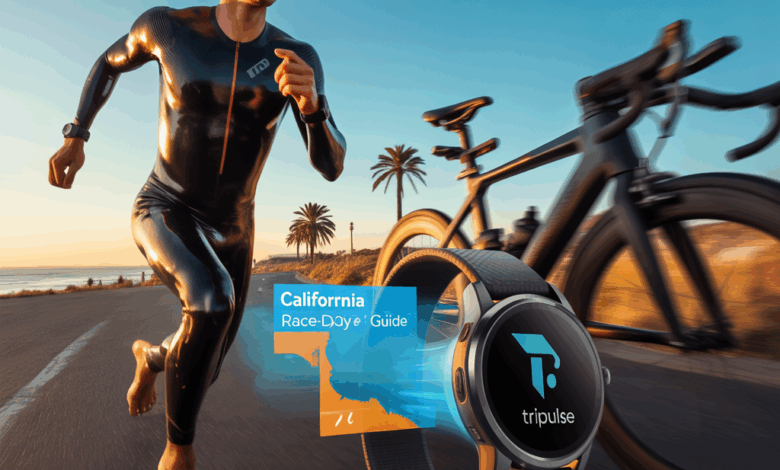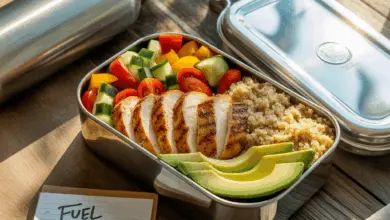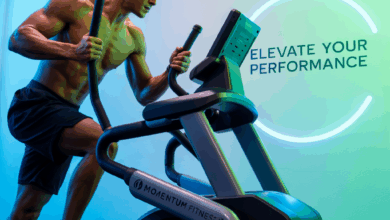California Triathlon Guide for Race Day — Your Complete Race-Day Playbook

Ever arrived at a race and felt that jittery mix of excitement and uncertainty—did you pack enough nutrition, where exactly is the transition entrance, and is the swim wetsuit legal for these water temps? If so, you’re not alone. Whether you’re tackling a sprint tri in Southern California or an Olympic-distance race up the coast, this California triathlon guide for race day will walk you through practical strategies, workout variations, and checklists to maximize performance and minimize stress.
Why a race-day plan matters (and how this guide helps)
Race day is the culmination of weeks or months of training. Without a clear plan, simple mistakes—poor fueling, forgotten gear, or inefficient transitions—can wipe out hard-earned fitness. This post serves as an actionable race-day manual with realistic examples, from pre-race rituals to post-race recovery, tailored for the variable climates and course types you’ll encounter across the Golden State.
Before dawn: Pre-race morning routine
Sleep and timing
Aim for consistent sleep the week before the event. Set two alarms and wake up early enough to digest food comfortably (usually 2–3 hours before the start). Example: Casey from San Diego wakes at 4:30 a.m. for a 7:00 a.m. start—enough time for a light breakfast, a short bathroom break, and a warm-up.
Nutrition and hydration
- Pre-race meal: 300–400 calories of easy-to-digest carbs + small protein (oatmeal with banana and a scoop of yogurt or toast with peanut butter).
- Hydration: Sip 12–16 oz of water or electrolyte drink in the 2 hours before the race; avoid overhydration.
- Race fuel: For events longer than 60 minutes, plan 30–60g carbs per hour through gels, chews, or a sports drink.
Transition game plan: speed and simplicity
Transition is a place to gain or lose time. Use a checklist and set up your T1/T2 area the same way every race.
Transition setup tips
- Lay out items in race order (helmet, sunglasses, shoes) and use elastic laces for quick shoe entry.
- Mark your rack spot with a bright towel so you can find it fast.
- Practice brick workouts (bike-to-run) to simulate the feeling of shifting muscle groups.
Swim, bike, run: tactical advice for California courses
Open-water swim strategies
California races often feature ocean or lake swims—learn to sight, draft when permitted, and practice wave starts. If you’re nervous about choppy surf, do a few open-water sessions in similar conditions. Consider a slightly larger neoprene cap for visibility.
Bike tips for coastal winds and hilly routes
Wind and hills are common on California bike courses. Work on cadence drills and practice powering up short climbs. On windy days, lower your profile, stay in the small chainring on sustained climbs, and use crosswind technique to maintain stability.
Run pacing and the brick effect
Expect legs to feel heavy coming off the bike. Use progressive pacing: start conservatively for the first mile/km to find your rhythm. Include tempo runs and race-pace efforts in your training to adapt to that “brick” feeling.
Workout variations to sharpen race-day performance
Mix these sessions into your weekly plan to build race readiness:
- Interval swim sets (8 x 100 with 20–30 sec rest) for speed and breath control.
- Hill repeats on the bike (6 x 3 min efforts) for climbing strength.
- Brick workouts: 40–60 min bike immediately followed by a 20–30 min run at race pace.
- Recovery week every 3–4 weeks—cut volume by 30–50% but keep intensity short.
Gear checklist for the California triathlon guide for race day
Pack this the night before and lay it out so you can visually confirm each item:
- Wetsuit (if legal), swim cap, goggles
- Bike, pump, spare tube, CO2 or pump, multi-tool
- Helmet, sunglasses, cycling shoes, race belt
- Running shoes, hat/visor, sunscreen
- Nutrition: gels, bars, electrolytes
- ID, timing chip, safety pins
Race-day mindset and small wins
Control what you can: your effort, nutrition, and transitions. Use positive self-talk and a simple mantra (e.g., “Smooth and steady”). Celebrate micro-wins—clean T1, consistent nutrition, or a steady negative split on the run.
Post-race recovery and learning
After the finish, rehydrate, refuel within 30–60 minutes (20–30g protein + carbs), and do light stretching. Journal one thing that went well and one thing to improve—this small habit accelerates progress for your next race.
Frequently Asked Questions
Q: What should I eat the night before a California triathlon?
A: Stick to a familiar, carbohydrate-focused meal with moderate protein—think pasta with a simple sauce, rice bowls, or baked potato with chicken. Avoid high-fiber or greasy foods that can upset your stomach. Hydrate throughout the evening, but don’t overdo it right before bed.
Q: How do I know if a wetsuit is legal for an open-water race?
A: Race organizers publish water temperature rules—wetsuits are usually allowed under a specific temp threshold. Check the athlete guide for your event and test your wetsuit in similar water temperatures beforehand to ensure comfort and mobility.
Q: How early should I arrive at packet pick-up and transition?
A: Arrive early to allow 60–90 minutes for parking, racking your bike, and a short warm-up. Packet pickup times vary; if you can, collect your bib the day before to save time on race morning.
Real-world example: A day in the life at a Northern California Olympic tri
Imagine you’re racing an Olympic tri near Sacramento. You wake at 5:00 a.m., eat oatmeal, and drive to the venue. You set up transition, rehearse your bike mount line once, and do a 10-minute swim warm-up. On the bike you manage effort through windier sections, then shift to a controlled 10K that you finish pleased with—small planning choices added minutes to your personal best.
Ready to race smarter?
This California triathlon guide for race day gives you the blueprint—now make it personal. Test gear during training, refine nutrition in shorter events, and practice transitions until they become second nature. For tailored training plans and specific meal templates, check out our workout routines and nutrition guides. Want tips on recovery and mental prep? Visit our wellness tips page.
Race day is a puzzle of small details—get them right, and the race becomes your reward. Ready to take the next step? Pack your bag tonight, schedule a brick workout this week, and show up with confidence.
Call to action: Sign up for a local practice swim or tune into our training checklist to make your next California triathlon your best one yet.





